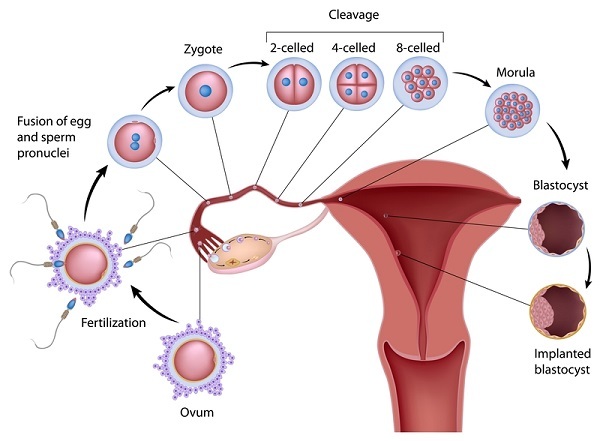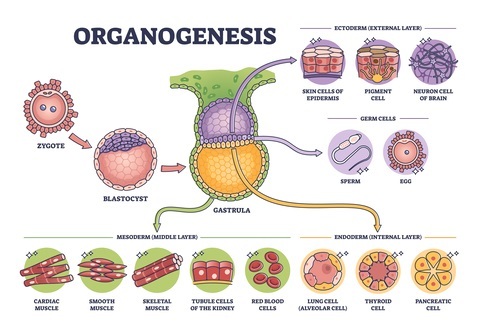
 Data Structure
Data Structure Networking
Networking RDBMS
RDBMS Operating System
Operating System Java
Java MS Excel
MS Excel iOS
iOS HTML
HTML CSS
CSS Android
Android Python
Python C Programming
C Programming C++
C++ C#
C# MongoDB
MongoDB MySQL
MySQL Javascript
Javascript PHP
PHP
- Selected Reading
- UPSC IAS Exams Notes
- Developer's Best Practices
- Questions and Answers
- Effective Resume Writing
- HR Interview Questions
- Computer Glossary
- Who is Who
Developmental Biology - An Overview
Introduction
Developmental biology is the study of how organisms grow and develop from the moment of fertilization to adulthood. It encompasses a wide range of biological processes, from the formation of a single cell to the formation of complex organisms with intricate organs and organ systems.
This field of study is important because it provides insight into the mechanisms that control the development of an organism, which can be useful in understanding disease and designing therapies to treat them.

The Beginnings of Life
Developmental biology begins with the formation of the zygote, the single cell that results from the fusion of an egg and sperm.
This process is called fertilization and is the start of embryonic development. The zygote is the first cell of the new organism, and it contains all the genetic information needed to develop into a fully formed individual.
After fertilization, the zygote undergoes a series of cell divisions called cleavage. During this process, the zygote divides into smaller and smaller cells, which eventually form a ball of cells called a blastula.
The blastula continues to divide and eventually forms a structure called a gastrula, which contains the three germ layers: the ectoderm, endoderm, and mesoderm.

The Three Germ Layers
The three germ layers give rise to all the tissues and organs of the body. The ectoderm forms the skin and nervous system, the endoderm forms the gut and respiratory system, and the mesoderm forms the muscles and skeleton.
Cells within each germ layer differentiate into specific types of cells. For example, the ectoderm gives rise to skin cells, hair cells, and nerve cells, while the mesoderm gives rise to muscle cells, bone cells, and blood cells.
Developmental Signals
The differentiation of cells into specific cell types is controlled by developmental signals, which are molecules that are produced by one cell and affect the behaviour of another. These signals can either stimulate or inhibit cell differentiation.
One well-known developmental signal is the protein Sonic hedgehog, which is involved in the development of the nervous system, limbs, and many other organs. Sonic hedgehog is produced by a group of cells called the notochord, which is located in the developing embryo. The signal travels to nearby cells and stimulates them to differentiate into specific cell types.
Another important developmental signal is the family of proteins called Wnt. Wnt proteins are involved in the formation of many tissues and organs, including the nervous system, bones, and kidneys. They are also involved in the development of cancer, as mutations in Wnt signalling pathways can lead to uncontrolled cell growth.
Organogenesis
Organogenesis is the process by which organs form from the germ layers. It is a complex process that involves cell differentiation, migration, and communication. Organogenesis occurs during embryonic development and continues into early childhood.
The heart, for example, begins to form during the third week of embryonic development. It starts as a tube-like structure and eventually develops into a four-chambered organ that pumps blood throughout the body. The development of the heart is controlled by a variety of developmental signals, including Sonic hedgehog and Wnt.

The Brain and Nervous System
The development of the brain and nervous system is a particularly complex process that involves the differentiation of many different cell types. The brain and nervous system begin to form during the third week of embryonic development and continue to develop throughout childhood.
Neural stem cells give rise to the various types of cells that make up the nervous system, including neurons, astrocytes, and oligodendrocytes. These cells migrate to their final destinations in the brain and form complex networks of connections.
Disorders of Development
Disorders of development can occur at any stage of embryonic or fetal development and can result in a wide range of abnormalities. Some of the most common developmental disorders include:
Neural Tube Defects
These are defects that occur during the formation of the neural tube, which gives rise to the brain and spinal cord. The most common neural tube defect is spina bifida, which occurs when the spinal cord fails to close properly during development.
Congenital Heart Defects
These are abnormalities in the structure of the heart that occur during development. They can range from minor defects that do not require treatment to life-threatening conditions that require surgery.
Down Syndrome
Down syndrome is a genetic disorder that occurs when there is an extra copy of chromosome 21. It is characterized by intellectual disability, a characteristic facial appearance, and a variety of medical problems.
Cleft Lip and Palate
These are birth defects that occur when the tissues that form the upper lip and roof of the mouth do not fuse properly during development.
Autism Spectrum Disorder
autism spectrum disorder is a neurodevelopmental disorder that affects social interaction, communication, and behaviour. It is thought to be caused by a combination of genetic and environmental factors.
Understanding the mechanisms that control development is important in understanding these disorders and developing therapies to treat them. For example, researchers are exploring the use of stem cells to treat a variety of developmental disorders, including spinal cord injury and Down syndrome.
Conclusion
Developmental biology is a fascinating field that explores the complex processes that govern the growth and development of living organisms. It encompasses a wide range of biological processes, from the formation of a single cell to the formation of complex organisms with intricate organs and organ systems.
Understanding these processes is important in understanding diseases and developing therapies to treat them. While much progress has been made in this field, there is still much to be learned about the intricate mechanisms that control development.

